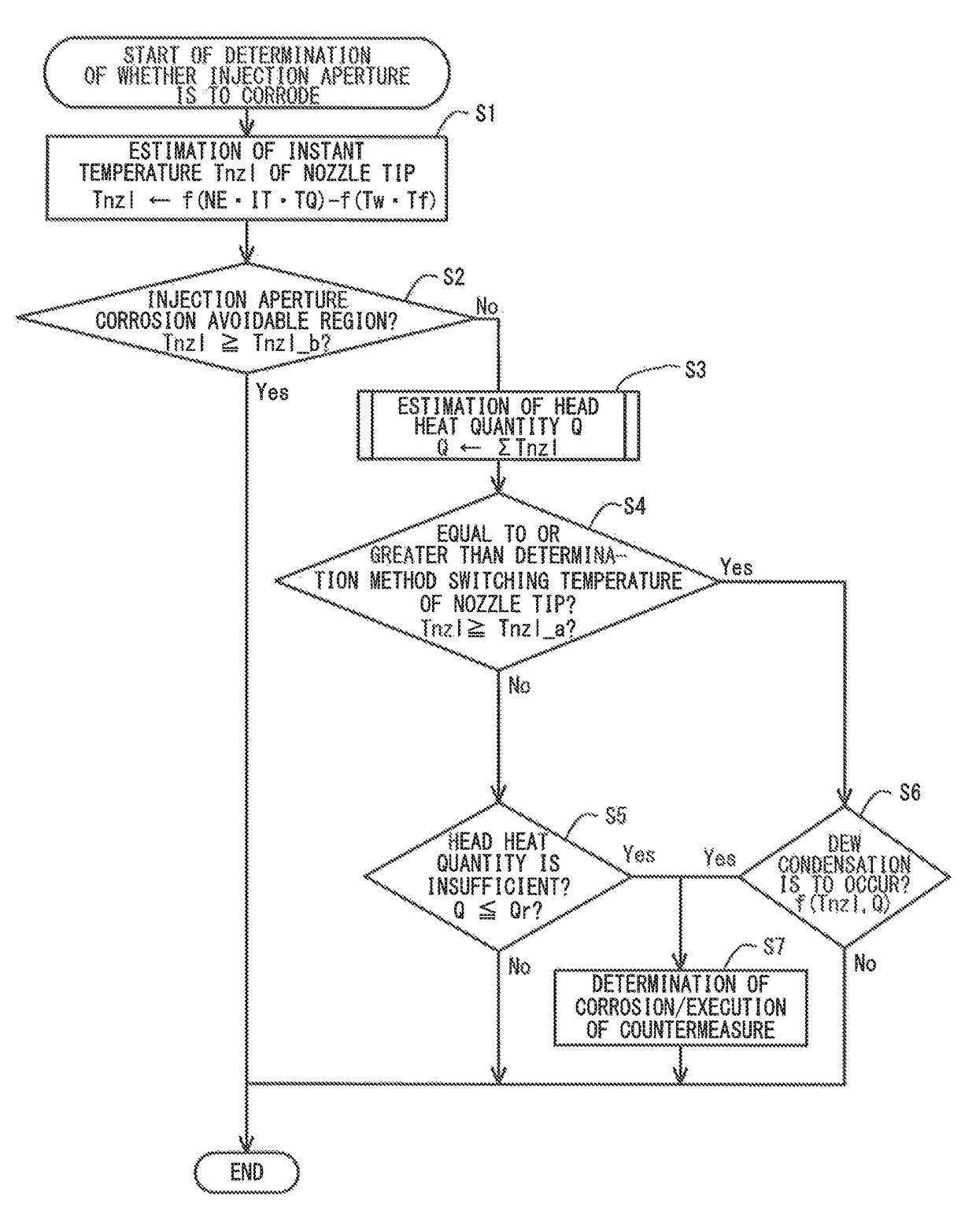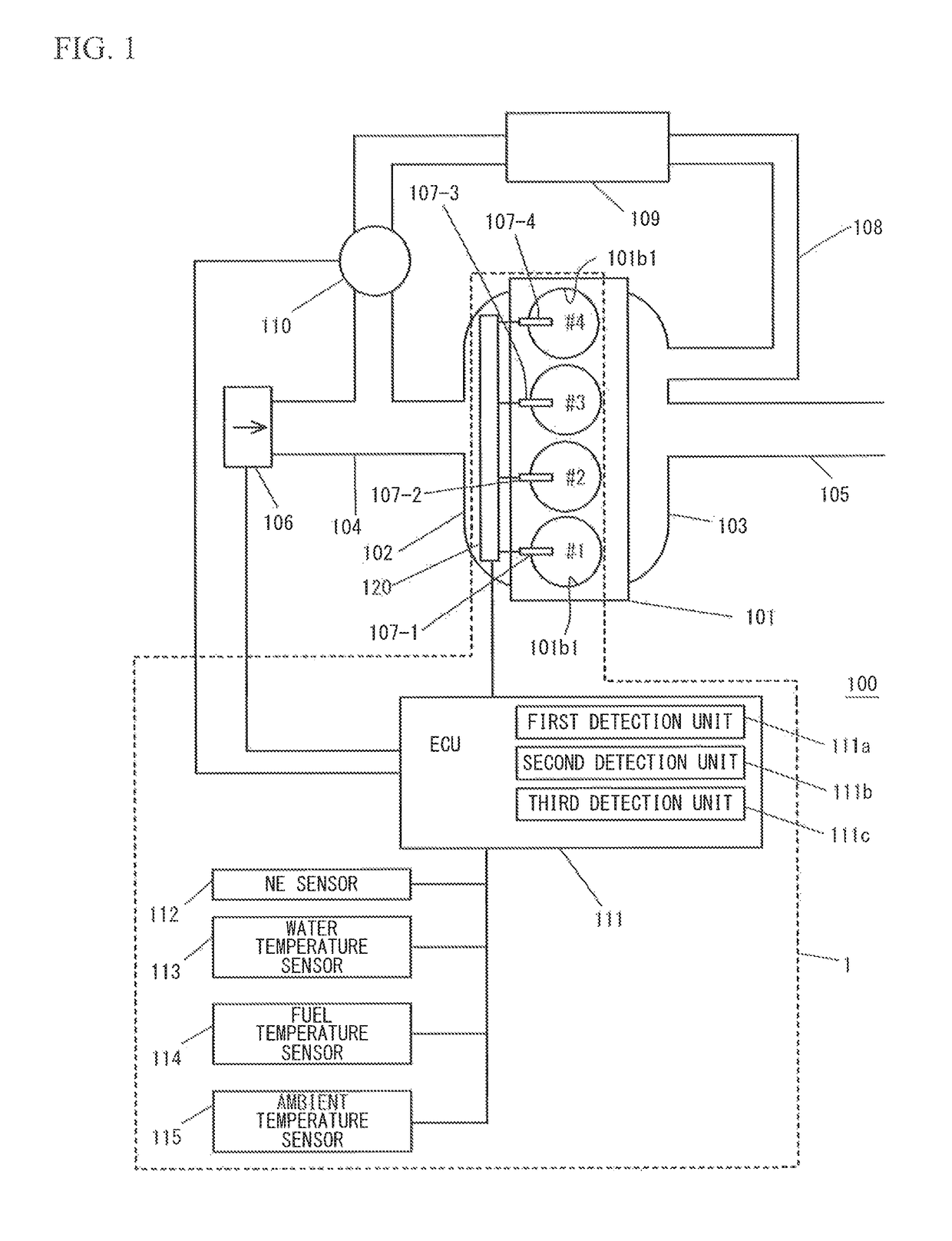Control device for internal combustion engine
a control device and internal combustion engine technology, applied in the direction of electric control, corrosion prevention fuel injection, instruments, etc., can solve the problems of corroding of the injection aperture located at the nozzle tip portion of the nozzle, and achieve the effect of reducing the computation load
- Summary
- Abstract
- Description
- Claims
- Application Information
AI Technical Summary
Benefits of technology
Problems solved by technology
Method used
Image
Examples
first embodiment
[0033]FIG. 1 is an explanatory diagram illustrating an overview configuration of an internal combustion engine 100 of a first embodiment. FIG. 2 is an explanatory diagram of an injector 107 installed in the internal combustion engine 100. A fuel injection device 1 is installed in the internal combustion engine 100. The internal combustion engine 100 in the first embodiment is an internal combustion engine that injects fuel into cylinders, more specifically, is a diesel internal combustion engine, but may be a gasoline internal combustion engine. Although the number of the cylinders of the internal combustion engine is not limited, the internal combustion engine 100 of the present embodiment has four cylinders. The internal combustion engine 100 includes an engine body 101 including a cylinder head 101a and a cylinder block 101b, and a #1 cylinder through a #4 cylinder in the engine body 101. The fuel injection device 1 includes a #1 injector 107-1 through a #4 injector 107-4 respect...
second embodiment
[0057]Next, a second embodiment will be described with reference to FIG. 10A, FIG. 10B, and FIG. 10C. The second embodiment replaces the method of determining whether dew condensation is to occur in the first embodiment with an alternative method. That is to say, the second embodiment changes the process at step S6 in the flowchart illustrated in FIG. 4.
[0058]FIG. 10A, FIG. 10B, and FIG. 10C are diagrams for describing a method of determining whether dew condensation is to occur. FIG. 10A is a base map illustrating the decrease history of the temperature of the nozzle tip after shutdown of the internal combustion engine. FIG. 10B is a graph predicting a process of how the temperature of the nozzle tip changes with time by using the base map based on the temperature of cooling water converted from the head heat quantity. FIG. 10C illustrate a map used to calculate the dew point arrival time.
[0059]The ECU 111 includes a base map illustrated in FIG. 10A. The base map illustrates a rela...
third embodiment
[0060]Next, the third embodiment will be described with reference to FIG. 11 through FIG. 13. The third embodiment replaces the estimation method of the head heat quantity Q in the first embodiment with an alternative method. That is to say, the process at step S3 in the flowchart illustrated in FIG. 4 is changed.
[0061]With reference to FIG. 12, an internal combustion engine 200 includes a first water temperature sensor 113a at the front end side of the cylinder head 101a, and a second water temperature sensor 113b at the rear end side. With reference to FIG. 11, at step S12a, a temperature Tw1 of cooling water at the upstream side is detected by the first water temperature sensor 113a. At step S12b, a temperature Tw2 of cooling water at the downstream side is detected by the second water temperature sensor 113b. At step S12c, a temperature difference ΔT between the upstream and downstream temperatures is calculated. In the example illustrated in FIG. 12, the temperature difference ...
PUM
 Login to View More
Login to View More Abstract
Description
Claims
Application Information
 Login to View More
Login to View More - R&D
- Intellectual Property
- Life Sciences
- Materials
- Tech Scout
- Unparalleled Data Quality
- Higher Quality Content
- 60% Fewer Hallucinations
Browse by: Latest US Patents, China's latest patents, Technical Efficacy Thesaurus, Application Domain, Technology Topic, Popular Technical Reports.
© 2025 PatSnap. All rights reserved.Legal|Privacy policy|Modern Slavery Act Transparency Statement|Sitemap|About US| Contact US: help@patsnap.com



